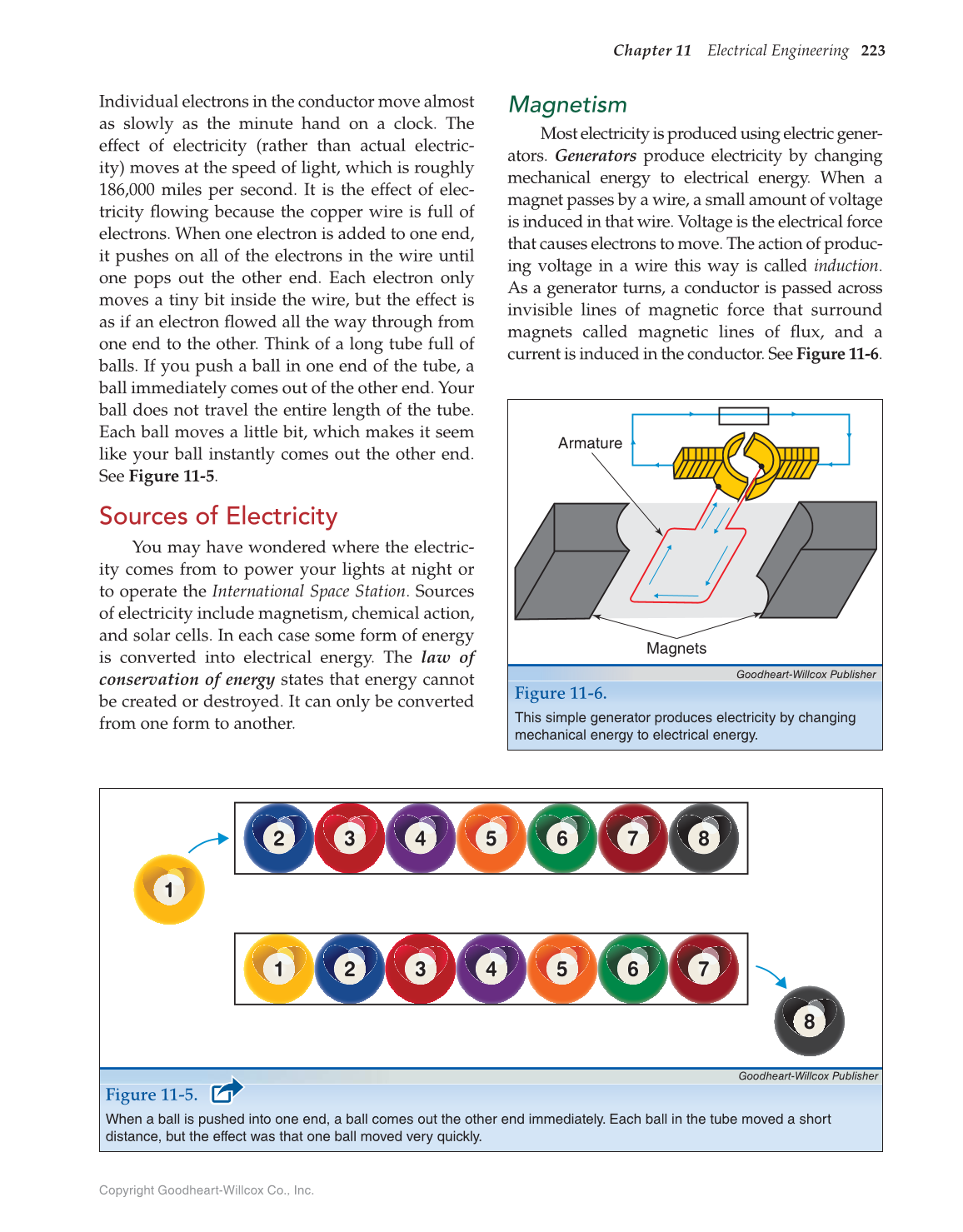Copyright Goodheart-Willcox Co., Inc.
Chapter 11 Electrical Engineering 223
Individual electrons in the conductor move almost
as slowly as the minute hand on a clock. The
effect of electricity (rather than actual electric-
ity) moves at the speed of light, which is roughly
186,000 miles per second. It is the effect of elec-
tricity fl owing because the copper wire is full of
electrons. When one electron is added to one end,
it pushes on all of the electrons in the wire until
one pops out the other end. Each electron only
moves a tiny bit inside the wire, but the effect is
as if an electron fl owed all the way through from
one end to the other. Think of a long tube full of
balls. If you push a ball in one end of the tube, a
ball immediately comes out of the other end. Your
ball does not travel the entire length of the tube.
Each ball moves a little bit, which makes it seem
like your ball instantly comes out the other end.
See Figure 11-5.
Sources of Electricity
You may have wondered where the electric-
ity comes from to power your lights at night or
to operate the International Space Station. Sources
of electricity include magnetism, chemical action,
and solar cells. In each case some form of energy
is converted into electrical energy. The law of
conservation of energy states that energy cannot
be created or destroyed. It can only be converted
from one form to another.
Magnetism
Most electricity is produced using electric gener-
ators. Generators produce electricity by changing
mechanical energy to electrical energy. When a
magnet passes by a wire, a small amount of voltage
is induced in that wire. Voltage is the electrical force
that causes electrons to move. The action of produc-
ing voltage in a wire this way is called induction.
As a generator turns, a conductor is passed across
invisible lines of magnetic force that surround
magnets called magnetic lines of fl ux, and a
current is induced in the conductor. See Figure 11-6.
Goodheart-Willcox Publisher
Figure 11-5.
When a ball is pushed into one end, a ball comes out the other end immediately. Each ball in the tube moved a short
distance, but the effect was that one ball moved very quickly.
2
1
3 4 5 6 7 8
2 3 4 5 6 7
8
1
Armature
Magnets
Goodheart-Willcox Publisher
Figure 11-6.
This simple generator produces electricity by changing
mechanical energy to electrical energy.
